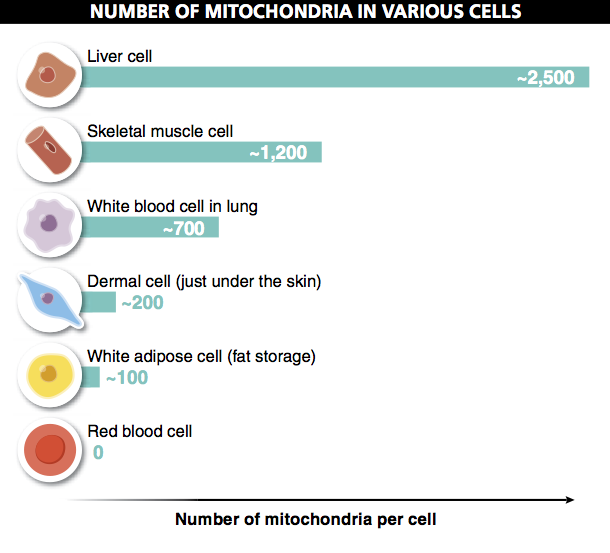
Graphic Content
Chapter 3 Graphic Content
Chapter 3. Chapter 3 Graphic Content
Introduction
Graphic Content
true
true
You must read each slide, and complete the question on the slide, before proceeding to the next one.

Instructions
Review the information provided in the graph to answer each question below.
After submitting your answer, you will be provided feedback to check if your response is correct.
(This activity contains 5 questions.)
1.

1. What are the variables in this graph?
The different cell types observed are the variables. For each cell type, the figure shows how many mitochondria it has.
2.

2. What additional information would make this figure more helpful? Why?
It would be helpful to see data for more cell types, such as sperm cells, egg cells, or brain cells. Data on variation among cells of a particular type within an individual would also be helpful. In other words, do all liver cells have the same number of mitochondria, or does the number vary a lot? And does the number of mitochondria in a specific cell type of a person vary over time—such as when the person gets older, or in response to exercise?
3.

3. What can you conclude from this figure?
Cells with high rates of metabolic activity seem to have more mitochondria.
4.

4. Is “number of mitochondria per cell” the best measure of a cell’s “energy-generating capacity”? Can you think of a reason why this might not be a perfect measure? (Hint: muscle cells can be much, much larger than liver cells.)
First, perhaps “number of mitochondria per some measure of cell volume” would be better, which would be a measure of mitochondrial density. This would make it easier to compare energy-generating capacity for cells that differ greatly in size. Second, it is also possible that mitochondria can shrink or swell. If that’s the case (and some researchers believe it is), maybe the energetic needs of a cell can be met by a few big mitochondria or by a large number of small mitochondria—in which case, the number of mitochondria wouldn’t be the best measure. A measure of total mitochondrial volume might be better.
5.

5. Based on these data, can you make any of your own predictions?
Some other cells with high metabolic activity might have relatively large numbers of mitochondria. Sperm cells, for example, might have larger numbers. Similarly, for one cell type, such as muscle cells, more active cells (such as leg muscles) might have more mitochondria than less used muscles (such as those controlling your pinky toe).
Activity results are being submitted...